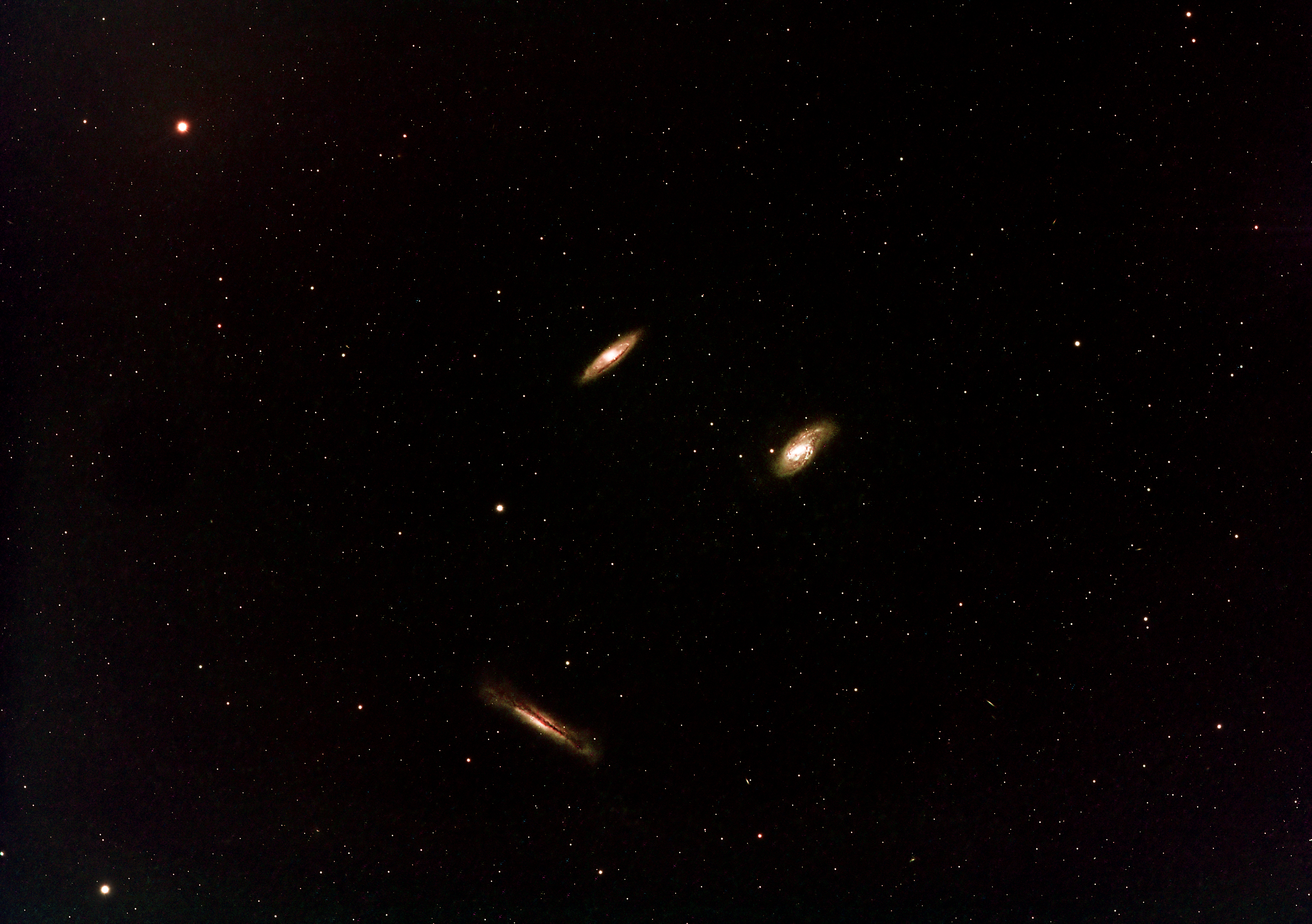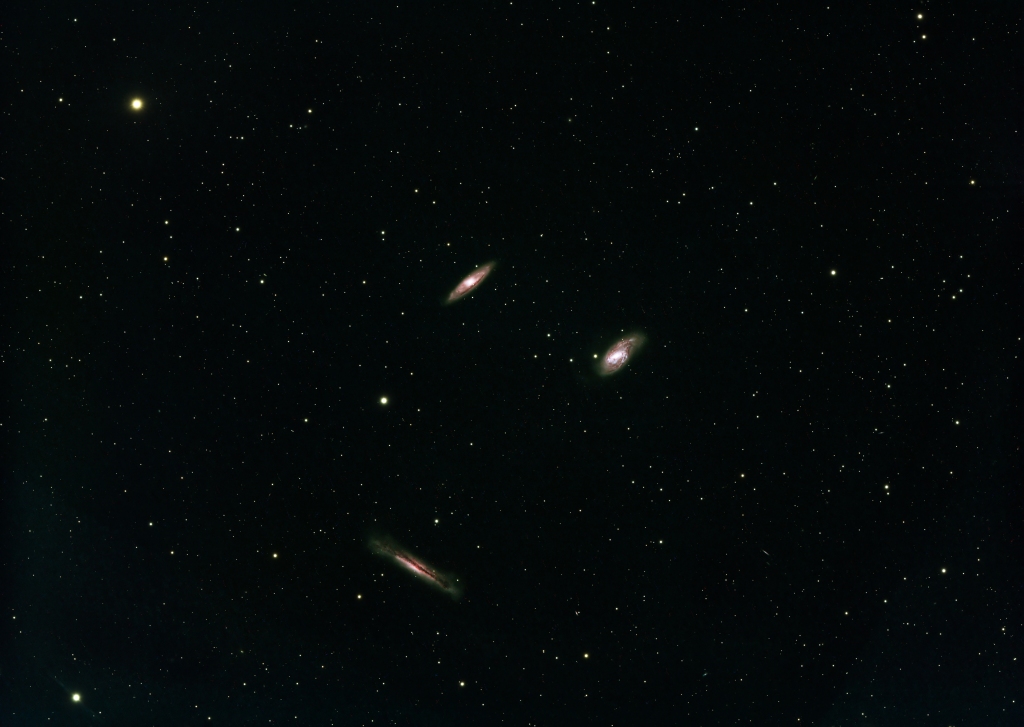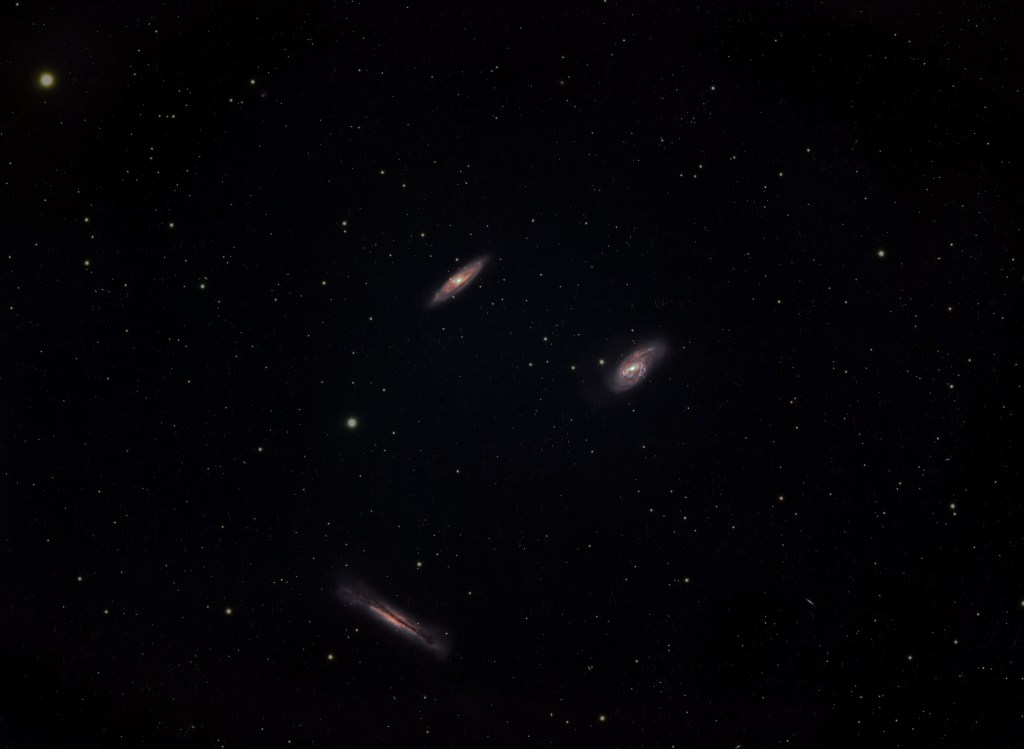Soaring roughly 35 million light-years from Earth, within the constellation Leo, resides a captivating group of galaxies known as the Leo Triplet (also known as the M66 Group). This close-knit trio, consisting of spiral galaxies M65, M66, and NGC 3628, offers a glimpse into the dynamic interactions that shape galactic evolution.
Each member of the Leo Triplet boasts a distinct character. M65, classified as a barred spiral galaxy, features a prominent central bar and tightly wound spiral arms. M66, another spiral, exhibits a looser structure and a brighter central core. NGC 3628, the faintest of the three, holds an intermediate spiral classification.

Despite their individual appearances, the Leo Triplet galaxies are locked in a gravitational dance. Tidal interactions, the gravitational tug-of-war between the galaxies, are believed to play a significant role in their ongoing evolution. These interactions can trigger bursts of star formation within the galaxies, distort their shapes, and even lead to the exchange of gas and dust between them.
Studying the Leo Triplet presents astronomers with a valuable opportunity to witness the impact of galactic interactions firsthand. Observations reveal signs of ongoing star formation within the galaxies, potentially triggered by these close encounters. Additionally, the presence of long tails of gas and dust streaming from some galaxies further suggests the influence of tidal forces.
The Leo Triplet also holds historical significance. M66, the brightest member of the group, was the first galaxy definitively identified as a spiral beyond our own Milky Way. This discovery, made in the late 18th century, challenged the prevailing notion that our galaxy was the only one of its kind.
over the course of several nights I was able to gather more data during “Galaxy” season on the Leo Triplets. Having a scope that is only 480mm in length limits some of the galaxies I can capture. However, the Leo Triplets, although individually small in my field of view, make for a nice composition. The additional hours of data help to bring out more of the surrounding dust clouds of the galaxies without the need to over stretch the image in post processing.

Gazing upon the Leo Triplet, even with powerful telescopes, presents a challenge for amateur astronomers due to their relative faintness. However, for those with the right equipment and dedication, these celestial companions offer a glimpse into the captivating world of interacting galaxies and the profound influence they have on each other’s evolution. The Leo Triplet serves as a testament to the dynamic nature of our universe, where galaxies are not isolated entities but rather participants in a grand cosmic ballet.

The above image was created from additional data captured on the 26th April 2025, and added to the previous data. This additional 2 hours of data, has allowed me to still bring out the details of the outer arms of the galaxies without overexposing the core of the galaxies.
Discover more from Nicks Astrophotography
Subscribe to get the latest posts sent to your email.

